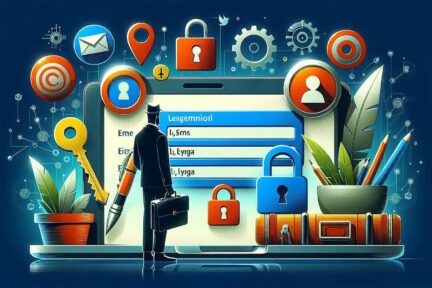In today’s fast-paced and interconnected world, staying connected with teams has become more crucial. The rise of remote work, globalisation, and diverse collaboration opportunities has necessitated reevaluating traditional communication methods. This article will explore the key strategies and tools to help individuals and organisations stay seamlessly connected with their teams, fostering productivity, innovation, and camaraderie.
Digital communication tools have revolutionised how teams interact, enabling real-time collaboration regardless of geographical boundaries. Platforms like Slack, Microsoft Teams, and Zoom have become indispensable for teams to exchange messages, hold virtual meetings, and share documents effortlessly. These tools offer features such as instant messaging, video conferencing, file sharing, and project management integration, making it easier to coordinate tasks and ideas.
Establishing structured communication channels is crucial to prevent information overload and ensure efficient communication. Staying connected with Teams can create specific channels or threads for different organisational projects, topics, or departments. This reduces clutter and ensures that relevant discussions are easily accessible to the right individuals. Utilising hashtags, tags, and search functionalities further enhances the ability to find and retrieve information swiftly.
While text-based communication is convenient, incorporating regular video conferencing sessions can add a personal touch to interactions. Video calls enable face-to-face conversations, allowing team members to read body language, facial expressions and engage in more nuanced discussions. This is particularly valuable for building rapport, fostering team spirit, and addressing complex issues that require a higher level of clarity.
Transparency and open communication are cornerstones of successful team collaboration. Encourage team members to share updates, progress reports, and challenges openly. Foster an environment where feedback is constructive and delivered with empathy. By promoting a culture of transparency, team members are more likely to feel valued, engaged, and motivated to contribute their best efforts.
Teams are often composed of diverse individuals with varying work styles, schedules, and preferences. Staying connected with Teams will embrace flexibility by accommodating different communication preferences, time zones, and work arrangements. Asynchronous communication, where team members respond at their convenience, can help bridge time gaps and ensure everyone remains engaged and informed.
Efficient project management tools like Asana, Trello, and Jira can streamline team collaboration by providing a centralised platform for task assignments, progress tracking, and deadline management. These tools offer visual representations of project workflows, making it easier for team members to understand their roles, responsibilities, and the overall project timeline.
While formal communication is essential, informal interactions play a vital role in fostering team cohesion and building relationships. Encourage team members to engage in casual conversations, share personal updates, and celebrate achievements outside the work context. Virtual coffee breaks, team-building activities, and social channels can provide avenues for such informal communication, strengthening the sense of camaraderie.
In the age of rapid digital communication, practising mindfulness in your interactions is key. Take the time to compose thoughtful messages, avoid misinterpretations, and consider the tone and context of your communication. Mindful communication reduces the chances of misunderstandings, promotes a respectful work environment, and contributes to a positive team dynamic.
Staying connected with teams is more than just utilising communication tools; it’s about fostering a culture of collaboration, transparency, and mutual respect. By embracing digital tools, structured communication channels, regular video conferencing, and open communication practices, teams can overcome geographical barriers and work together seamlessly. Flexibility, adaptability, and a focus on mindful communication further enhance the effectiveness of team interactions. In a world where technology continues to shape how we work, staying connected with teams remains essential for driving success and innovation.
If you’d like to learn more about staying connected with Teams you can visit the Microsoft Training page.
You need the best IT support in London. Technology is complicated and expensive. It’s so hard to maintain everything and know what to do when something breaks or goes wrong. IT problems can put a damper on your day. They’re frustrating, time-consuming, and seem like a never-ending cycle of issues.
Penntech’s average NPS score over 90 days is 84. The average Net Promoter Score (NPS) for IT Managed Service Providers (MSPs) can vary. Still, an NPS of around 50 is considered excellent in this industry, with scores above 70 exceptional and rare.
We offer our services on a trial basis for the first three months because we’re confident in our delivery and approach.
Penntech offers a wide range of IT services, from strategic project management to 24/7 remote support, ensuring all your IT needs are always covered.
We provide advanced cybersecurity measures and expertise, including penetration testing services and Cyber Essentials, to protect clients from cyber threats.
We offer Clients the ability to scale IT services up or down based on their needs. This flexibility is crucial for businesses that experience seasonal changes or rapid growth.
Other providers often enforce their preferred IT stack, but we don’t, as IT is not a one-size-fits-all solution.
We ensure our Clients’ business continuity through robust disaster recovery and backup solutions.
With experience in various verticals and industries, Penntech understands different businesses’ unique IT challenges and can provide customised solutions..
Contact us today or explore the range of support packages on offer.


Business owners often have to wear many hats, from handling HR and marketing tasks to managing the finances. One task…

Cool Windows 11 Features That May Make You Love This OS
Microsoft released the Windows 11 operating system (OS) over a year ago. It was well-received mainly with reviews as stable…

6 Ways to Prevent Misconfiguration (the Main Cause of Cloud Breaches)
Misconfiguration of cloud solutions is often overlooked when companies plan cybersecurity strategies. Cloud apps are typically quick and easy to…

4 Proven Ways to Mitigate the Costs of a Data Breach
No business wants to suffer a data breach, but unfortunately, it’s difficult to avoid them in today’s environment. Approximately 83%…

The benefits of AI include advancing our technology, improving business operations, and much more. Adoption of AI has more than doubled…

Leading Password Managers for Personal and Business
We hope that your business is already considering a password manager system, but there’s still the matter of finding the…

What’s Changing in the Cybersecurity Insurance Market?
Cybersecurity insurance is still a pretty new concept for many SMBs. It was initially introduced in the 1990s to provide coverage for large enterprises. It covered things like data processing errors and online media.

What are the advantages of implementing Conditional Access?
It seems that nearly as long as passwords have been around, they’ve been a major source of security concern. Eighty-one…

Skills Every Cybersecurity Professional Needs in 2024
As we accelerate into 2024, the cybersecurity landscape is evolving at an unprecedented pace, demanding fresh skills from professionals in…

Skills Every IT Manager Must Master to Thrive in 2024
In the rapidly evolving landscape of technology, the role of an IT manager is more critical than ever. As we…

Why Every Business Needs a Cybersecurity Consultant
In today’s digital landscape, where online threats lurk around every corner, the importance of robust cybersecurity cannot be overstated. As…

The Ultimate Guide to Full-Service IT Management
In today’s fast-paced digital landscape, harnessing the full potential of your business means embracing the power of technology. “Unlocking Business…

Network Penetration Testing for Businesses
In an era where digital threats loom large, businesses must proactively safeguard their assets. Network penetration testing emerges as a…

Cybersecurity Providers You Can Trust
In today’s digital landscape, where data breaches and cyber threats are alarmingly frequent, selecting a trustworthy cybersecurity provider has become…

Cybersecurity Review 2023: Top Threats and Trends
As we delve into 2023, the cybersecurity landscape has never been more dynamic and crucial to our digital lives. From…

Essential Cybersecurity Tips to Safeguard Your Digital
In today’s hyper-connected world, protecting your digital life is more crucial than ever. With cyber threats lurking around every corner,…

Cybersecurity Guidelines: Must-Know Tips!
In an increasingly digital world, protecting your online presence is more critical than ever. Cybersecurity breaches are no longer just…